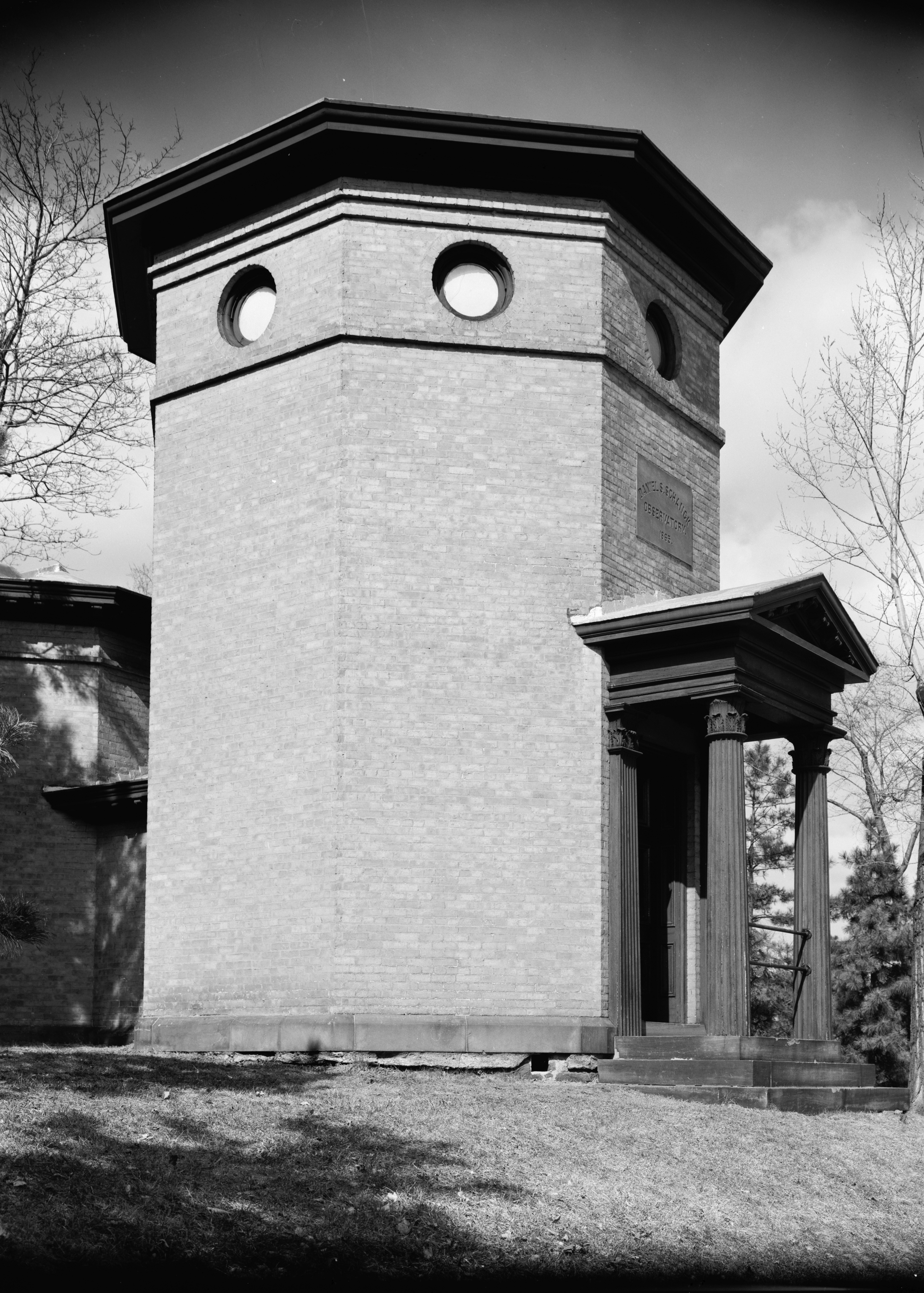The History of Shanck Observatory
 Schanck Observatory (1865) is the first building designed and erected specifically for the newly established Rutgers Scientific School. From its beginning, Rutgers College, like other colonial colleges, offered a traditional education focused on mathematics, Greek and Latin, and theology. The federal Morrill Land-Grant Act of 1862 promoted and partly funded higher education for scientific and practical vocations in each state. Willard Smith based his design for the observatory upon specifications from Rutgers professor David Murray for the study of agriculture, engineering, astronomy, mathematics, and land surveying. A precedent for the design may be found in the ancient Tower of the Winds, a building in the Roman Agora of Athens that is considered one of the world’s earliest meteorological stations. Rutgers College constructed the observatory of whitewashed brick and brownstone and named it in honor of donor Daniel S. Schanck. The building sits on a rise overlooking George Street, above the lights and activity at street level. A central masonry pillar centered on the octagonal floor plan rests on bedrock to minimize the effect of vibrations on the measuring instruments. On the second floor, a balcony surrounds the pillar-mounted telescope, allowing students to view the experiments. The roof rotates manually on iron wheels around an iron track, while operable roof panels allow the telescope to rotate to focus on locations in the night sky. The observatory’s telescope was restored to operational condition in 2018. Schanck Observatory is a contributing building to the Queen’s Campus Historic District on the National Register of Historic Places.
Schanck Observatory (1865) is the first building designed and erected specifically for the newly established Rutgers Scientific School. From its beginning, Rutgers College, like other colonial colleges, offered a traditional education focused on mathematics, Greek and Latin, and theology. The federal Morrill Land-Grant Act of 1862 promoted and partly funded higher education for scientific and practical vocations in each state. Willard Smith based his design for the observatory upon specifications from Rutgers professor David Murray for the study of agriculture, engineering, astronomy, mathematics, and land surveying. A precedent for the design may be found in the ancient Tower of the Winds, a building in the Roman Agora of Athens that is considered one of the world’s earliest meteorological stations. Rutgers College constructed the observatory of whitewashed brick and brownstone and named it in honor of donor Daniel S. Schanck. The building sits on a rise overlooking George Street, above the lights and activity at street level. A central masonry pillar centered on the octagonal floor plan rests on bedrock to minimize the effect of vibrations on the measuring instruments. On the second floor, a balcony surrounds the pillar-mounted telescope, allowing students to view the experiments. The roof rotates manually on iron wheels around an iron track, while operable roof panels allow the telescope to rotate to focus on locations in the night sky. The observatory’s telescope was restored to operational condition in 2018. Schanck Observatory is a contributing building to the Queen’s Campus Historic District on the National Register of Historic Places.













